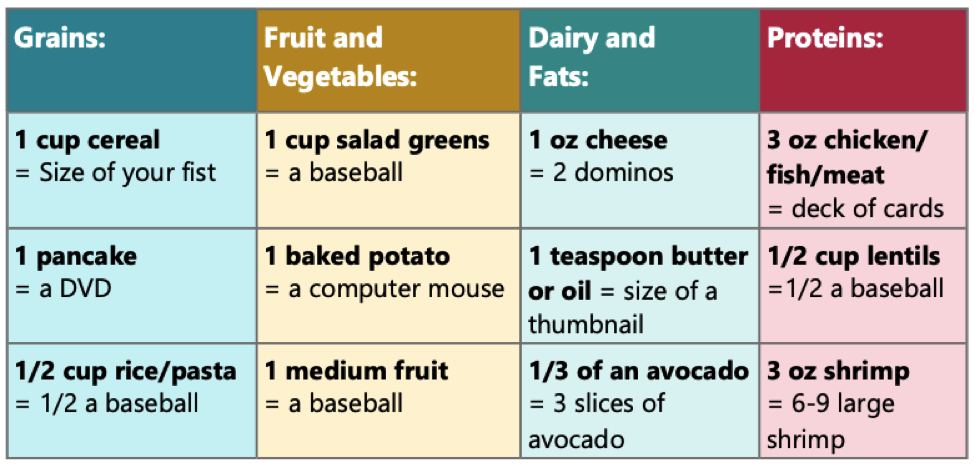How much should you eat?
Whether you want to lose weight or just maintain your weight, eating proper portions is just as important as eating “good for you” foods. Food portion sizes in American restaurants have doubled or tripled in the last 20 years. This plays a big role in the increase in obesity rates among children and adults.
Americans are having a hard time knowing what proper portions and serving sizes are. It is important to note that portion and serving sizes are different:
- A portion is the total amount of food you eat in one sitting.
- Serving size is the recommended amount of one type of food.
For example: the amount of fish you eat for dinner is a portion but 3 ounces (oz) of fish is the serving. Tip: Keeping serving sizes in check helps with portion control.
What does one serving size look like?

How many servings should you have daily?
The Dietary Guidelines suggests people 50 or older following a U.S style eating pattern choose foods every day from the following:
- Vegetables: 2 to 3 cups
- Fruit: 1.5 to 2 cups
- Grains: 5 to 8 oz or 1 cup
- Dairy: 3 cups
- Protein: 5 to 6.5 oz
- Oils: 5 to 7 teaspoons
Visit MyPlate.gov to learn more about what serving sizes are appropriate for you!
